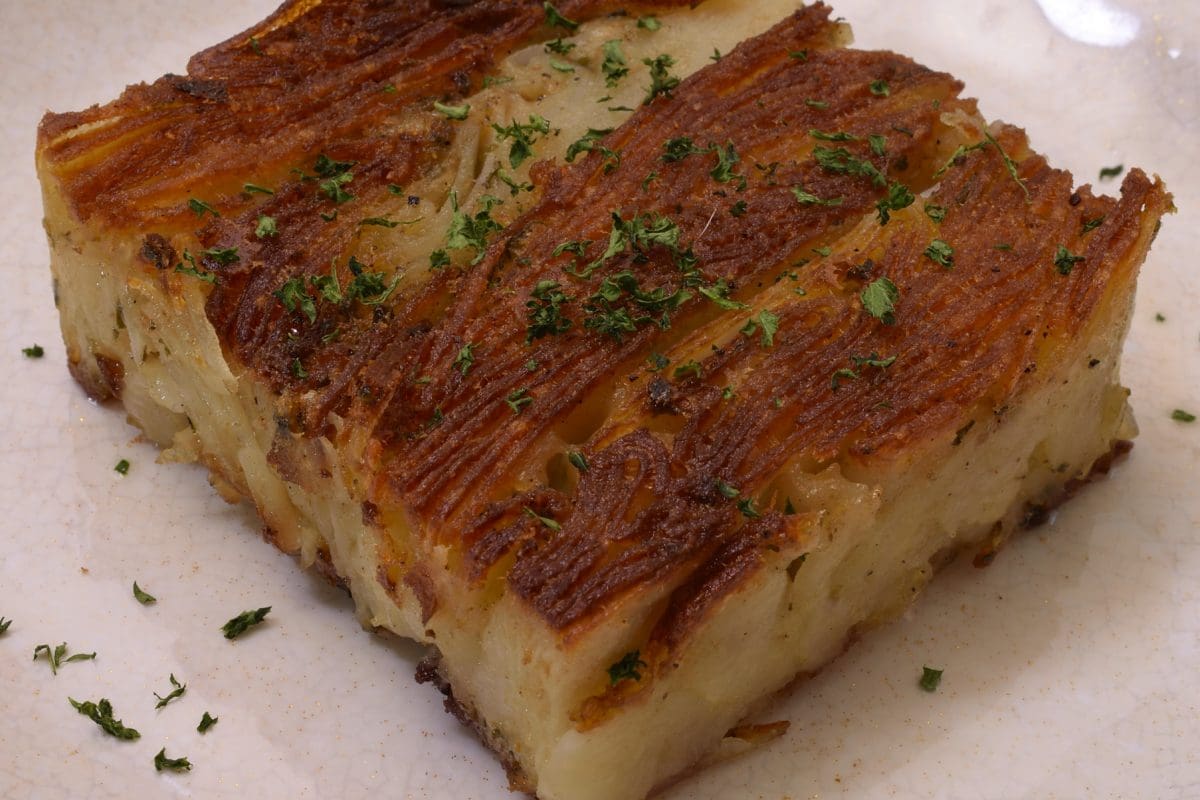Serves 8+
Level of difficulty: 3.25
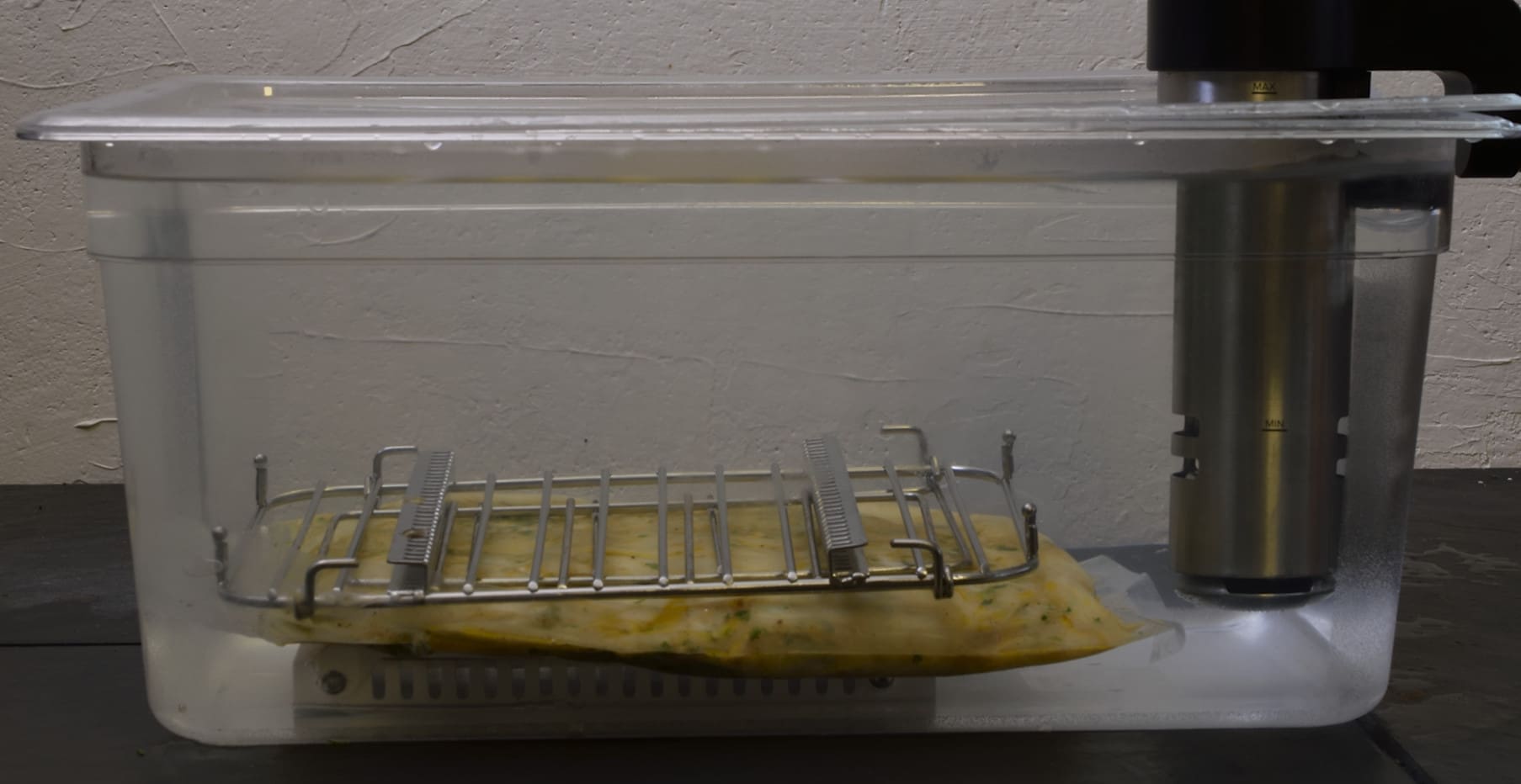
Procedure:
Preheat the sous vide bath to 183 F/84 C.

Slice the potatoes as thinly as possible without compromising their structural integrity. Stage into a deep sided container to make them easier to mix with the other ingredients.
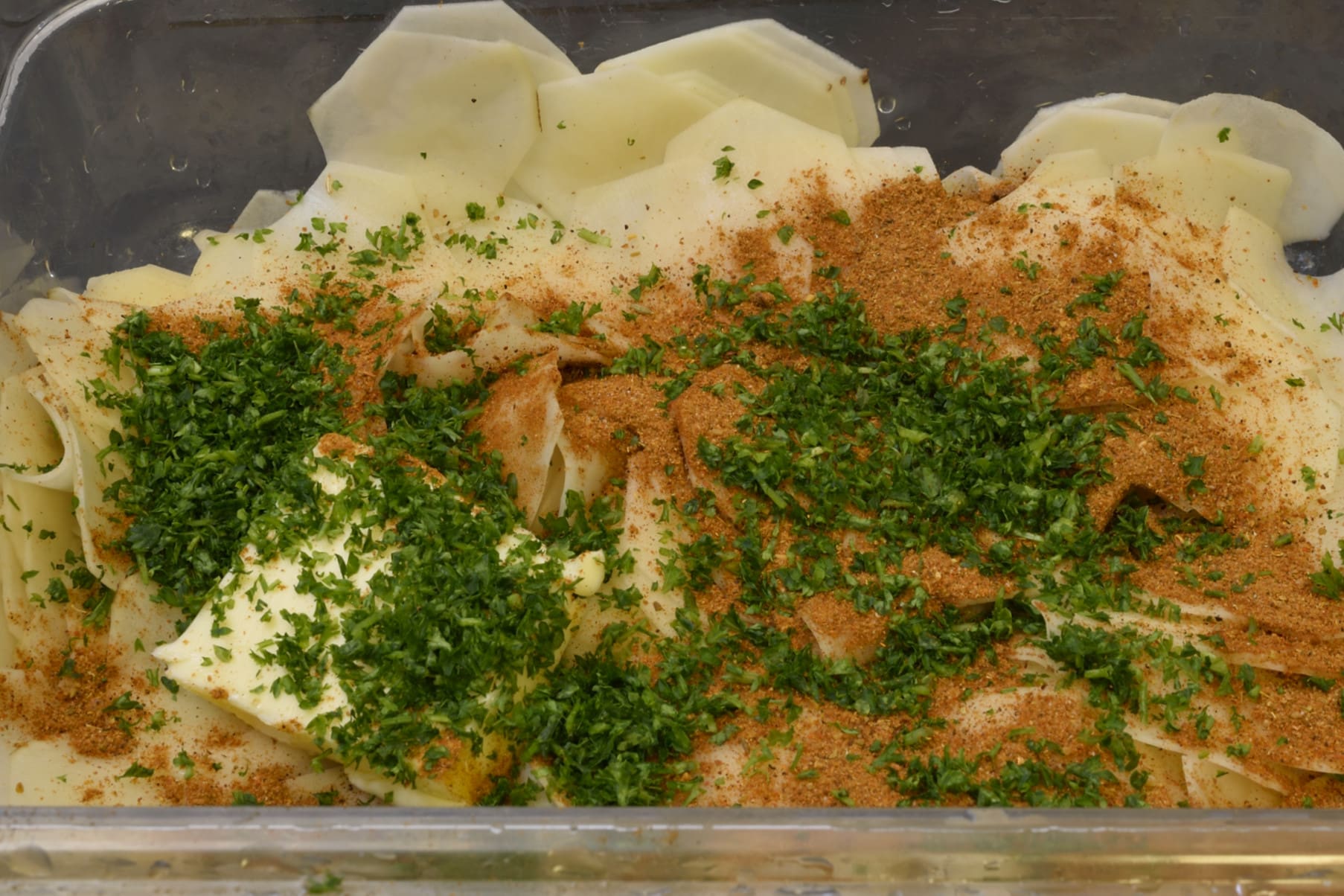
Add the salt, butter, paprika, and parsley.

Add the grated cheese, whipping cream, and flour.
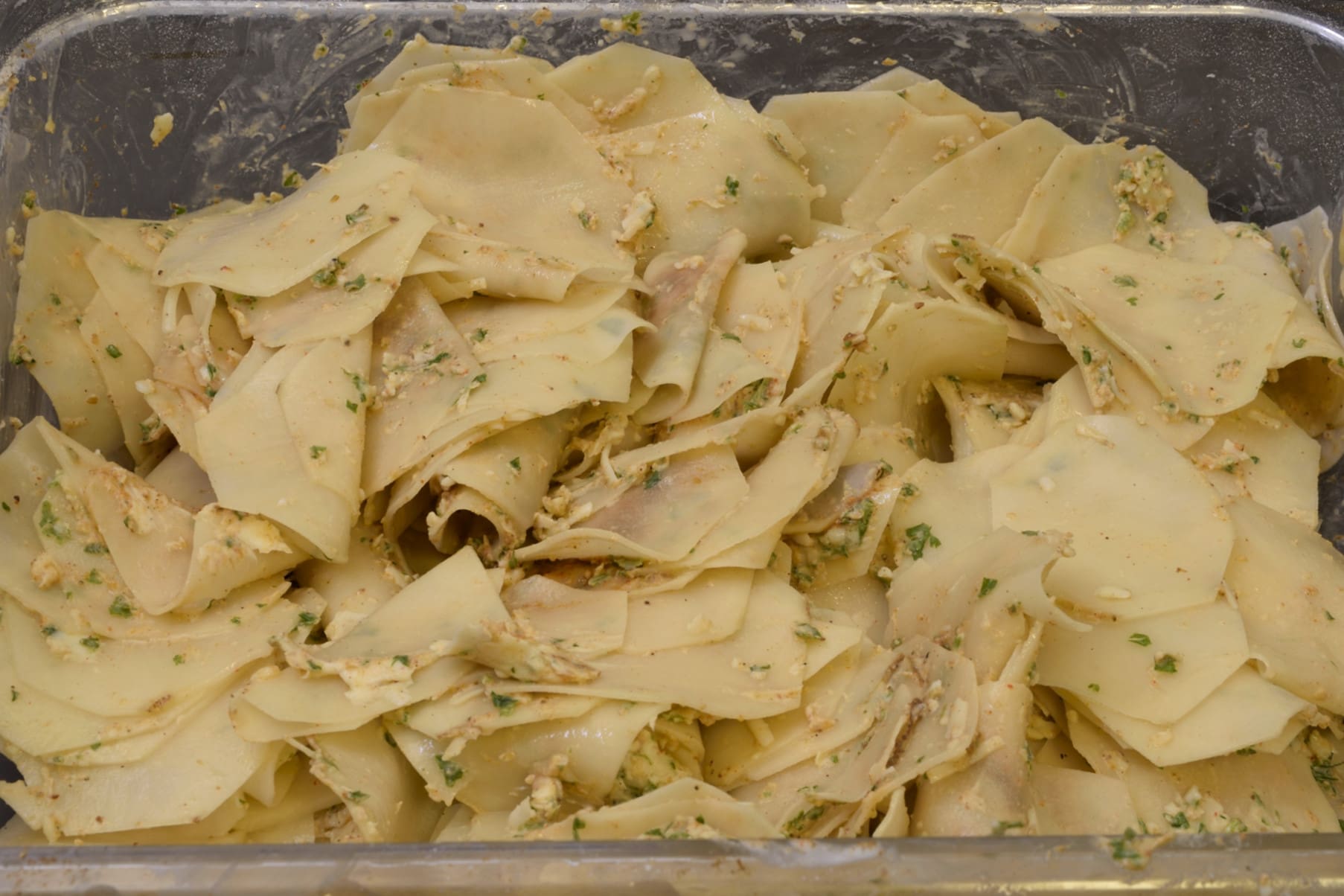
Use gloved hands to mix gently but well.

Load the mixture into the sous vide bag(s). After vacuuming, press flat so that the mixture cooks evenly. Keeping the pouch uniformly flat at every step pays off later!

Make sure there is a rack in the bottom of the container so that water can circulate underneath. Put a rack on top to help keep the pouch flat and on the bottom of the vessel.
Process the potatoes at 183 F/84 C for 90 minutes. After the time has elapsed, turn off the immersion circulator. Use a pitcher or siphon to remove as much of the hot water as possible. Replace with iced tap water. This helps to avoid jostling the mixture in the bag. Once the temperature of the water in the vessel has achieved 70 F/21 C, carefully remove the cooled pouch, put it on a cookie sheet or other flat surface and refrigerate at 40 F/4 C until fully cooled.

Rather than attempting to remove the pouch all at once, use a knife to cut through the plastic to create manageable strips.
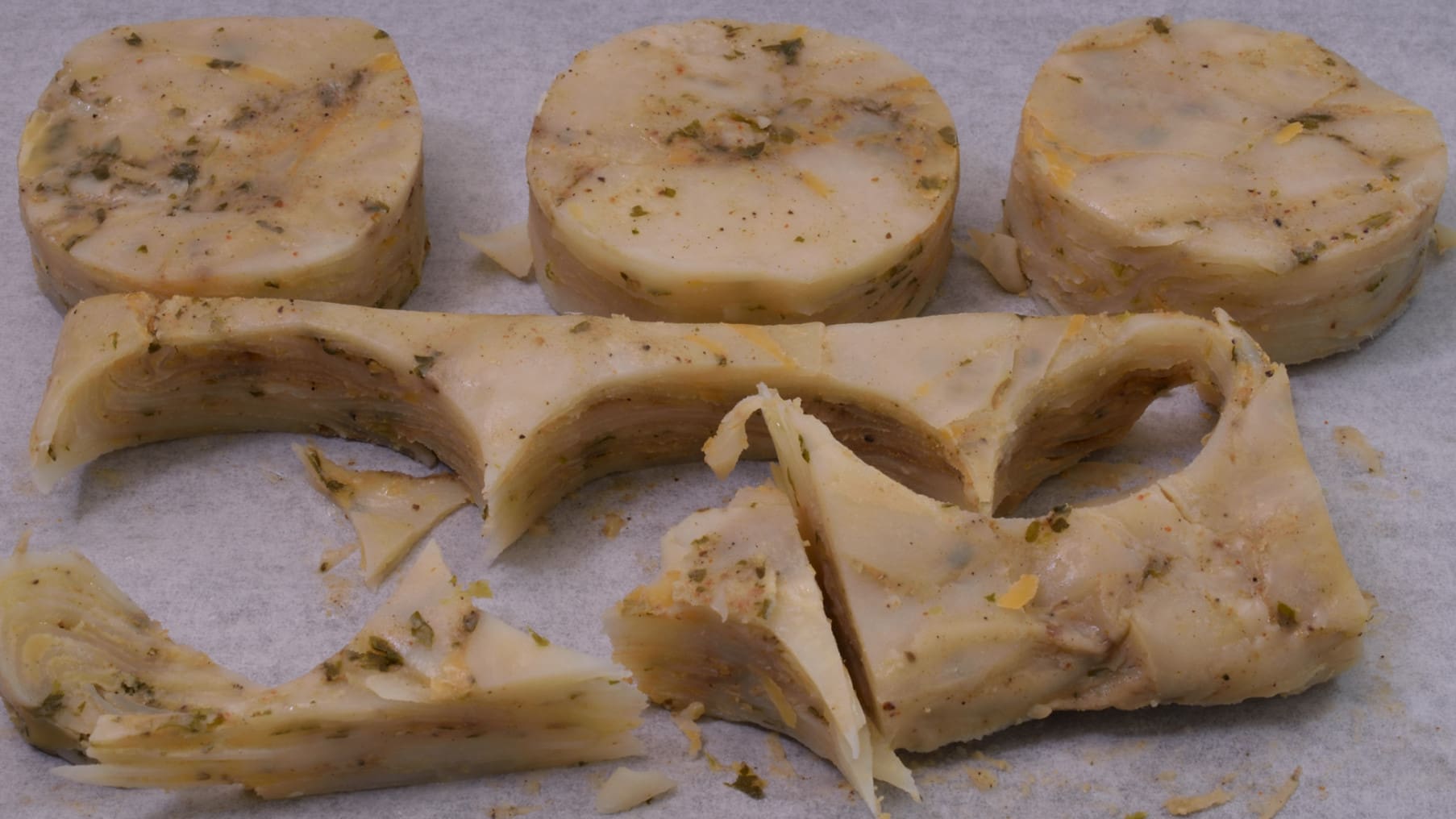
Cut the slab into desired shapes.
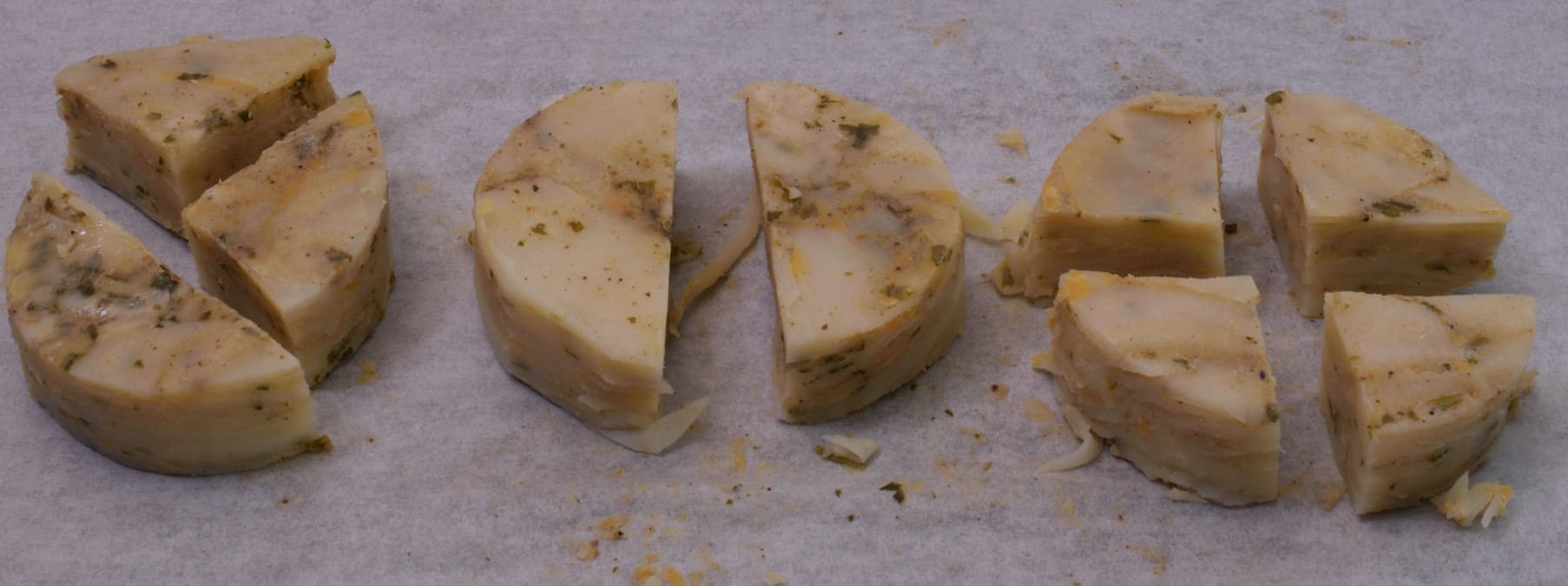
DO NOT DISCARD THE TRIM!

Cut the trim into roughly uniform pieces and load into a ring or cookie cutter, etc.
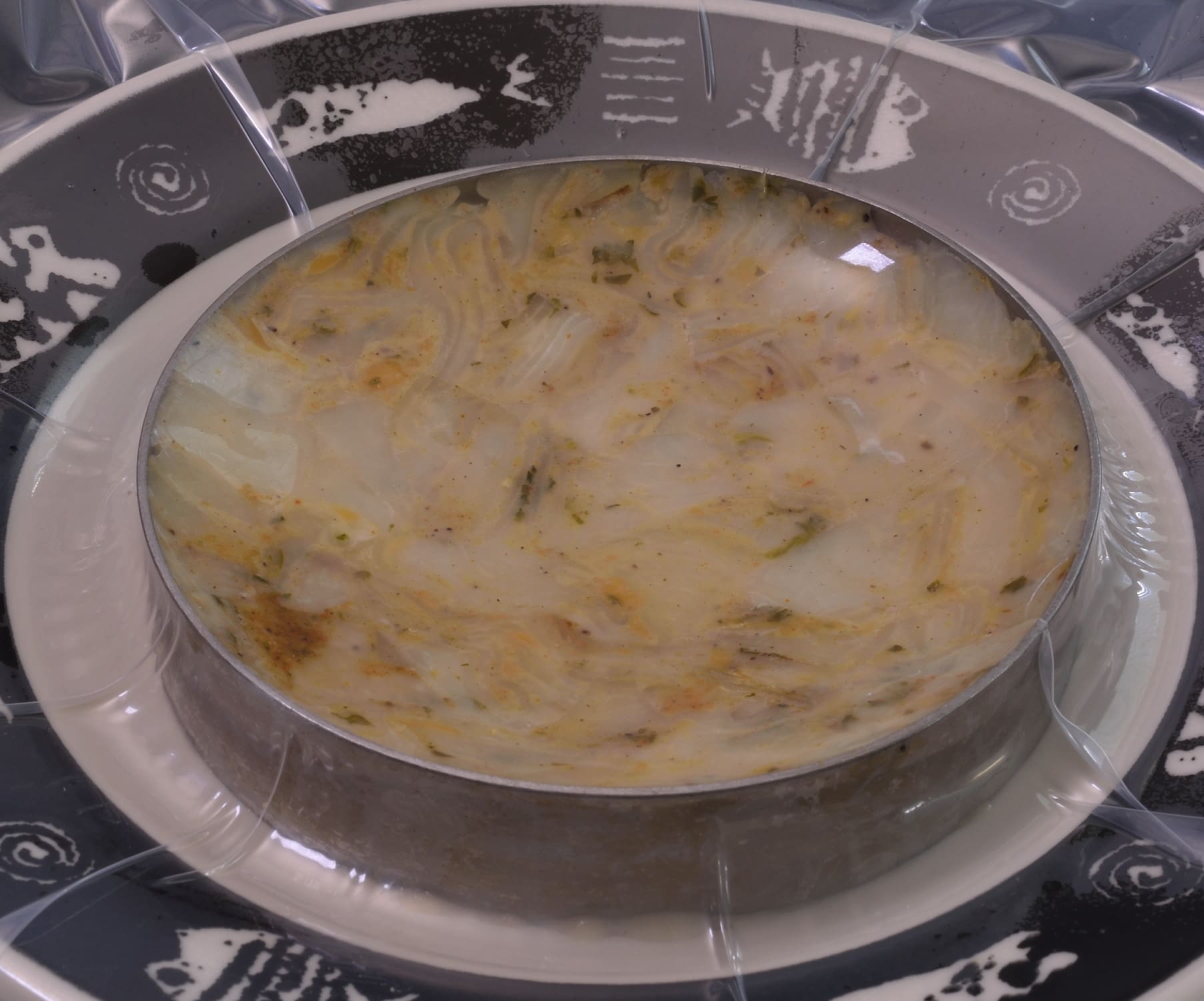
Stage the trim into a pouch and vacuum. Set aside/refrigerate overnight.
Heat a seasoned skillet to 350 F/176 C. Carefully stage the cut potato shapes into the pan, one at a time. Make sure to leave space between them so as not to avoid excessive contact–regardless of all of our efforts, the shapes are still fragile.
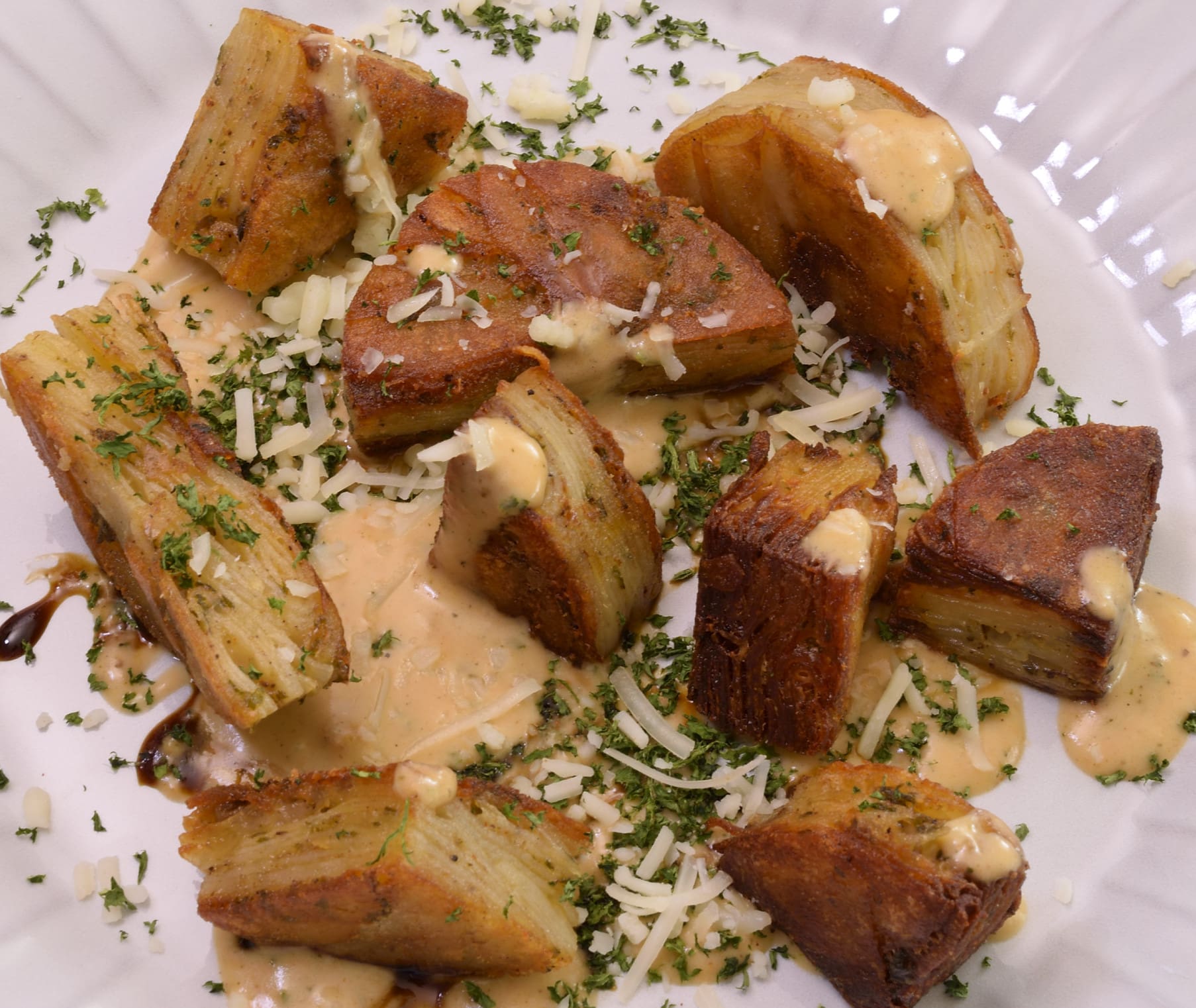
Do not over handle the potatoes in the pan–watch the edges and you can see the approximate level of browning. In our perfect universe, each surface only comes in contact with the pan ONCE!

Variation
Rather than cutting the slab into shapes like circles, squares, or triangles, cut into thick strips, turn on their sides, and stage into a frame, cookie cutter or ramekin. Vacuum again. After browning, this gives you the effect depicted below.

Don’t be afraid to use ketchup!

The Next Morning:
While you hearken back to how impressed your guests were with last night’s meal, you find yourself yearning for breakfast. The potato trim that you saved serves well as the classic American side dish “hash browns.”
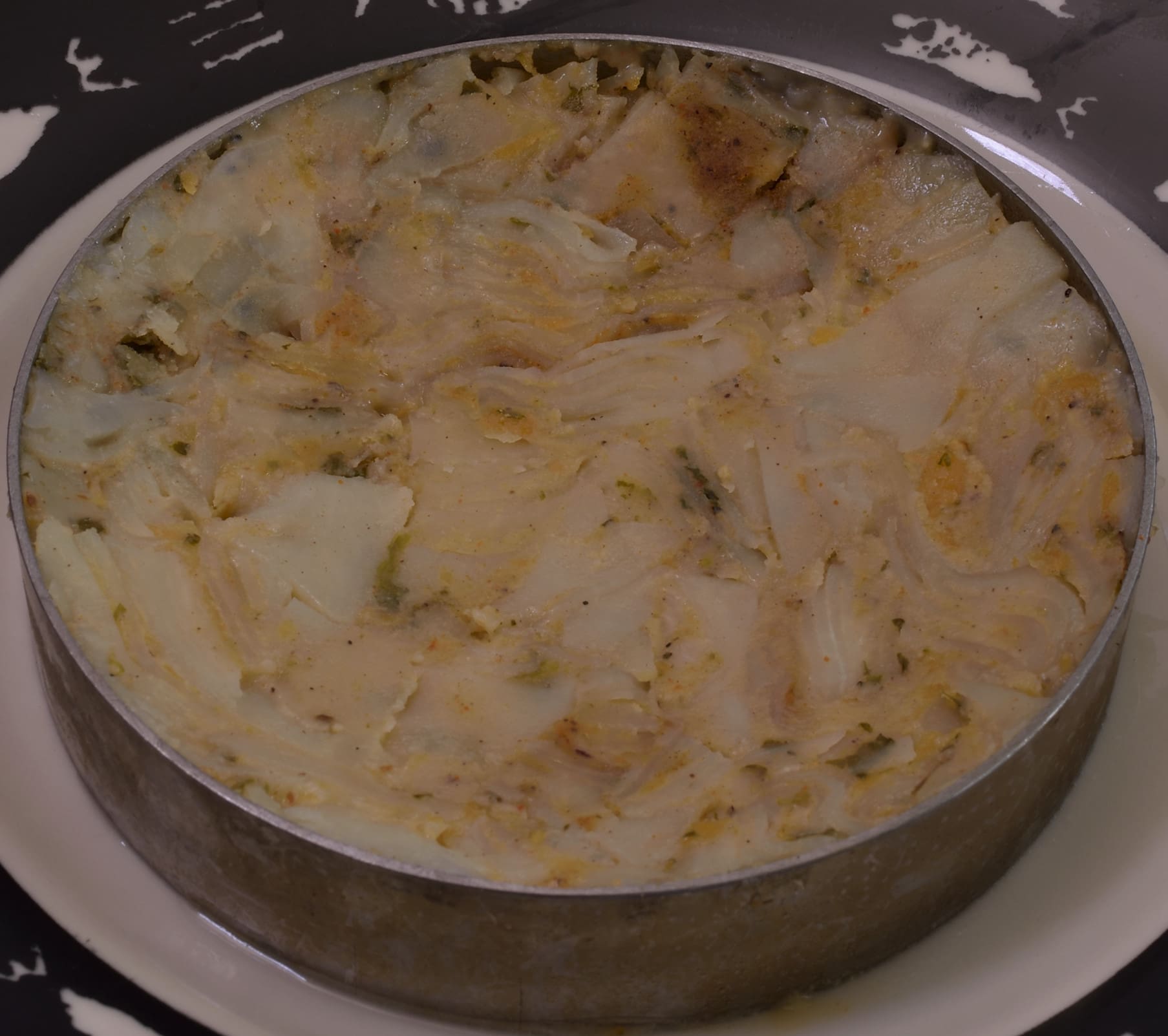
Carefully remove the packaging and use a spatula to carefully stage the patty into the preheated and lightly oiled pan. Sometimes I remove the ring in advance, sometimes I don’t!
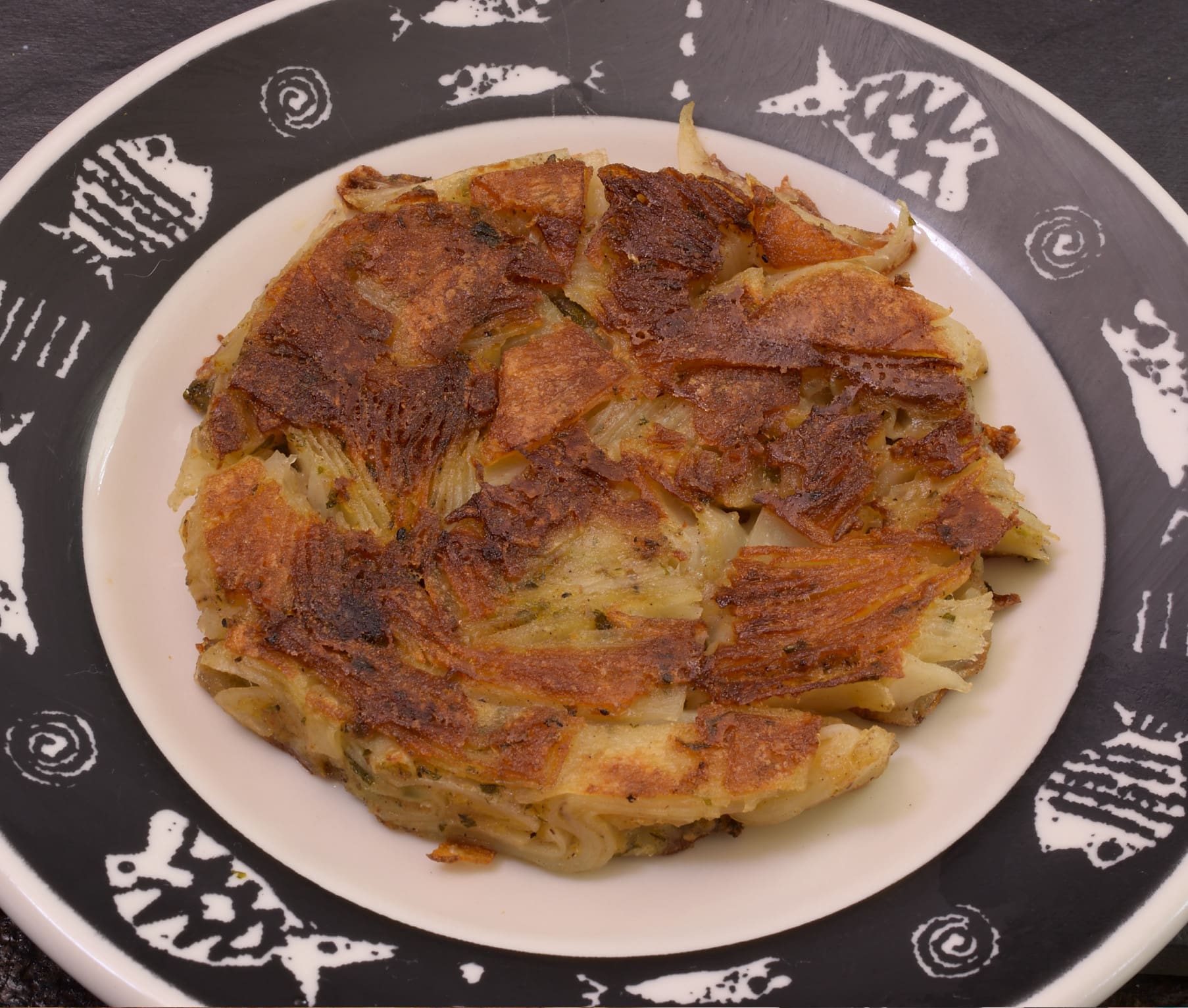
Hash browns like you never had them!
Norm King
